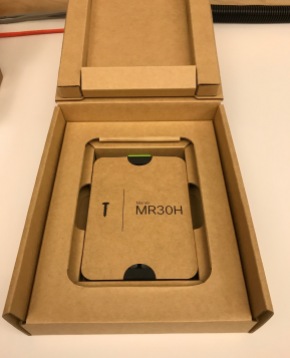Cisco Meraki should do more “enterprise” testing, or maybe just testing in general. Let me explain why I said this. Over the last five years I have opened on average 20 cases a year. Some regarding cosmetic issues, some regarding small “issues”. Some cases last over a year, because somehow I’m the only person in the world who can recreate the issue? But nothing causing actual downtime that could not quickly be addressed in another manner.
That is, until the MC product line, this is the Meraki Phone.
From time to time I randomly visit the Meraki Dashboard, mostly to disable the “auto-upgrade” that pushes “Stable Release Candidate” line of code to my devices. I really do like the option of auto-upgrading, but why are you pushing a “release candidate” to my production network? More on that later, but lets get back to the phone issue.
For the most part over the last year and a half(actually when the phone was first available I bought one) the Meraki Phone has done “okay”. I wouldn’t call it the best featured phone from Cisco especially for the price, however it does look nice.
Now during my dashboard visit, I randomly browse around looking for new things that are turned on, or how they have made things more visible. Cool.
This time I look at my Phone Directory(this lists users that should be assigned to a phone). I notice that my User is not assigned a phone, hmm, odd. Now lets do a Delorean mode and go back to maybe December(?). This is when I noticed a new option under Directory Sync, “Azure Active Directory”. Oh nice, we use that(Office 365 E5 + AAD-P2). Cool, so I set this up.
months .. pass … no …. issues ….. UNTIL ……
Like I said, I noticed my user does not have a phone assigned. So I look at the Phone list(this shows the physical phones in your network). I select my phone and I see it doesn’t show an assigned user. OK, I select the correct user click Save, done. Cool.
Oh … wait .. what happened to the assigned public phone numbers that I did have? Those numbers are shown right below the assigned user section.
They’re gone.
Hmm, so I remove the assigned user thinking they would come back. Nope. The option to assign phone numbers does not exist anymore. Odd.
OK, so lets assign the user again, that works–the user is assigned to the phone. Oh, I see an option to assign phone numbers, cool, NOPE, none of my phone numbers are available. Odd. So I start looking around, I go into the Phone Numbers(this shows public phone numbers assigned to your account). I see my phone numbers are still listed in the system. Cool.
So I look around and to see if they have somehow been assigned to another phone, nope. Hmm. Odd.
Now the first thing you might be thinking is wait, what about the AD/LDAP mappings that would need to be done. You know from the golden age of CUCM LDAP User search base mapping. Nahhh, no options for that.
So where are we at with this?
A support case with Meraki was opened instantly, as you see, or actually should be hearing a phone ring along with being able to make calls(yeah a little bad humor). My phone does not show as being assigned a phone number. Nor, can I assign my numbers to another phone. When you do call any of the numbers that I did have, they instantly are greeted with my voicemail message.
So here I sit, at the hands of poor QA done by Cisco Meraki.
The next day comes, I let time pass and call Support around noon(my local time). I have an issue of 100% downtime with my phone, Support tells me nothing can be done, nor can they do anything other than tell me what “engineering has told them to do”. I can’t talk to any person on the MC product line, i.e. a Product Manager. The only people I can talk to regarding this are Support. And, even that was painful.
I had to ask three times to speak to a Support Manger, why did I have to ask three times? I asked for a way to contact the Support Manger directly that I did talk with, I was told to just call support, as a way to contact that person was not available? I instantly had the feeling of Cisco Meraki did not care about this issue, even though I was told “we care“. Why would a support manager not want to take responsibility for this case, why would they not want to be directly contacted regarding this issue? Why would the PM of the product line not want to know about this? Do they even know? How are updates done to let people know? Once, again this is an issue of 100% downtime.
My phone can not place or receive calls using the phone numbers that I currently pay a provider for along with the support I pay to Cisco Meraki.
I wonder if Cisco Meraki uses the “Cisco Severity and Escalation Guidelines“. Do they even have one? How do they determine importance of an issue? I going to lean towards with “us/me” being a small setup—why bother with us, who cares?
Around, 2007 maybe 2006, not sure exactly. I called Cisco TAC. I had an issue with not being able to enable PBR on a Sup 6E. I opened the case online(which if I remember right, would be a Sev-3—meaning hey no big deal), maybe within 10 minutes I got a call from a CCIE. He told me his name along with the following:
“I am responsible for this case, I am here to help”
Now, this was not a service interrupting issue, this was me trying to enable PBR to send traffic to an IronPort Web Security Appliance. Actually, I didn’t mind if it worked or not as I had other methods to accomplish the same results. No big deal. However, the pure fact that someone said they are responsible for getting results to help me on this simple, little, tiny issue, is what did matter. Someone who I could call directly(or even email) that would make sure things work, is what did matter. And, of all things was done on a Saturday morning.
…
I wrote the above blog post around 2PM Central time, but was holding off on clicking Publish, I’m adding more detail to this as I think it needs to be mentioned. I found out who my Account Manager is from the Meraki Dashboard. I emailed that person asking them to look at a support case. After a quick exchange of how I can be contacted, I received a call(obviously on my cell phone). I don’t recall ever talking to this person. However, I did get a sense of importance to this issue and a willingness to get the “higher up” folks involved in a faster manner and the appearance of ownership to my issue. (And, I use the word “appearance” in a light manner, well you know, c’mon, sales folks). Smiley face/wink.
Shortly after I did receive a call from Support, explaining they were told the phone numbers(but not my phone extension) should be available again. Yes, other than my phone extension with my voicemail greeting and maybe some messages still attached to “something in the cloud”. I can receive and place calls now. This is the not the first time I have had to redo my voicemail greeting. But why?
This has opened lots of questions all leading to “what if” scenarios? The major one being this is a phone, what if the reason this phone was bought because it fit the need to at least try and provide access to an emergency service? And, besides emergency services, what about actual business needs, people in an office do not use cell phones, they have office phones(at least for us we do).
I know people are going to say: “Hey, it’s the cloud, don’t trust it” or “dude it’s Meraki, c’mon, you should know better”. Also, I looked around my dashboard I didn’t see anything that said “Beta” that was inline with what I was doing. Maybe those words need to be applied all over?
A good friend mentioned to me “Heck, if you worked someplace else, you would have been fired over this”. Meaning you recommend the product, it breaks, causes business down-time, you and the product are removed. Which brings up even more “what if” questions.
Maybe another option when opening a case is being able to place more details, other than “Low, Medium, High”, which sound like settings on a barbecue grill.
Maybe things like this actually need to happen. I understand things break, things break all the time. Maybe a culture change will take place? Reminds me of that AWS re:Invent Netflix session(I can’t find the video link), a guy was talking about when people push code and it breaks, you are expected to instantly fix it. Doesn’t matter if it breaks then, or a couple days later, or even if you’re on vacation, you own it, you fix it.
Or maybe, just maybe, I’ve watched too much Mad Max and have drank the kool-aid.
“They say people don’t believe in heroes anymore. Well, damn them! You and me, Max, we’re gonna give ’em back their heroes!”




































